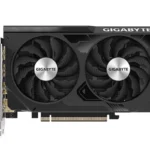AMD is improving their Ryzen 9000 series processors with updates that increase performance, enhance gaming capabilities, and extend warranty coverage. This is great news for current owners and potential buyers. AMD recently introduced significant updates and enhancements for its Ryzen 9000 Series processors with the highly anticipated Zen 5 architecture. The company announced a new 105W TDP mode, firmware improvements for latency reduction, and support for advanced DDR5 memory kits, all aimed at boosting performance and user experience.

Power Up: AMD’s Ryzen 9000 Series Gets a Performance Kick
AMD is giving its Ryzen 9000 series processors a welcome boost. With new firmware updates, select models can now tap into higher TDPs, resulting in a noticeable performance bump. This move aims to address some initial concerns about the chips’ performance, particularly in heavily threaded tasks.
TDP Unleashed
The Ryzen 5 9600X and Ryzen 7 9700X, originally capped at 65W, now officially support a 105W TDP mode. This means these chips can draw more power, leading to increased performance in demanding workloads. It’s important to note that adequate cooling is essential to handle the extra heat generated by this higher power draw.

Gaming Gains
AMD has also tackled core-to-core latency issues, resulting in smoother gameplay and improved performance in other latency-sensitive tasks. Collaborations with Microsoft have led to further optimizations in Windows, enhancing the gaming experience for Ryzen 9000 users.
Memory Muscle
Support for DDR5-8000 EXPO memory kits has been added, allowing for even faster memory speeds. This translates to improved overall system responsiveness and performance.
Warranty Peace of Mind
In addition to performance enhancements, AMD has extended the warranty coverage for the Ryzen 9000 series. This gives users greater confidence in their investment and peace of mind.
Key Improvements at a Glance:
| Feature | Details |
|---|---|
| Increased TDP | Ryzen 5 9600X and Ryzen 7 9700X now officially support 105W TDP for a performance boost. |
| Reduced Latency | Firmware updates and collaborations with Microsoft have decreased core-to-core latency, enhancing gaming and other latency-sensitive tasks. |
| Expanded Memory Support | Support for DDR5-8000 EXPO memory kits enables faster memory speeds and improved overall system responsiveness. |
| Extended Warranty | The warranty coverage for the Ryzen 9000 series has been extended for added peace of mind. |
Short Summary:
- AMD introduces 105W TDP mode for Ryzen 5 9600X and Ryzen 7 9700X to enhance performance.
- Latest AGESA firmware reduces core-to-core latency, promising better efficiency.
- Support for DDR5-8000 EXPO memory kits and new 800-series motherboards launched.
AMD has unveiled impressive performance enhancements for its Ryzen 9000 Series processors following feedback from the community regarding the Zen 5 architecture’s initial performance metrics. The most noteworthy change is the introduction of a 105W thermal design power (TDP) mode for the Ryzen 5 9600X and Ryzen 7 9700X models, which is designed to increase performance by approximately 10% in multi-threaded workloads.
“We’ve listened to feedback from our community, and we are committed to providing users with the performance they want without compromising on warranty,” said AMD’s spokesperson during the announcement.
Previously, the Ryzen 5 9600X and Ryzen 7 9700X launched with a default TDP of 65W, a marked decrease from their predecessors, offering new levels of power efficiency for desktop PCs. While this was touted in marketing materials, many users felt that the option for extra performance had been ignored. With this official announcement of the 105W TDP mode, AMD assures consumers that this setting is now covered under warranty, enabling them to unlock additional performance without the fear of voiding their purchase’s warranty.
AMD’s firmware updates have also addressed concerns about core-to-core latency, particularly impacting the Ryzen 9 models. Core-to-core latency can hinder performance when data is shared between different chiplets within the processor, an issue more prevalent with the Zen 5 architecture compared to its Zen 4 predecessor. AMD has effectively halved the number of required transactions necessary for core communication in these scenarios, promising substantial latency improvements.
“While our enhancements primarily impact specific threading workloads, we are pleased to report latency improvements that may also benefit certain gaming scenarios,” AMD clarified. Titles typically affected include Metro, Starfield, and Borderlands 3.
Despite these improvements, users are advised to manage expectations regarding gaming performance uplift. Prior reports from enthusiasts indicated some impressive reductions in latency—one user recorded a staggering 58% decrease—but it remains unclear how much these changes will impact overall performance in gaming titles. AMD has expressed intent to reassess and further analyze performance metrics in upcoming reviews.
In conjunction with these updates, AMD has included game-boosting optimizations into Windows’ mainline updates, improving branch prediction capabilities which have historically been available only through optional updates. The results of AMD’s testing using these optimizations demonstrate modest improvements in gaming—ranging from 2.3% to 4.4%—which, while incremental, contribute positively to user experience.
The company also proudly announced enhanced support for DDR5-8000 EXPO memory kits in the Ryzen 9000 stack. Although the ideal memory speed continues to be DDR5-6000 for most users, those interested in overclocking will appreciate the potential for reduced latency at higher speeds.
On the motherboard side, AMD introduces new X870 and X870E chipsets, which are now available for purchase. These motherboards come equipped with the necessary features to handle the new performance enhancements, including PCIe 5.0 for storage and graphics, and USB 4.0 interfaces, ensuring that the Ryzen 9000 Series can maximize its potential. Key specifications have also been integrated for improved user experience, alongside support for higher EXPO memory profiles.
“Our new X870 motherboards signify a leap forward in connectivity and performance options,” an AMD representative stated, emphasizing that they aim to meet professional and gaming needs alike.
The launch of the Ryzen 9000 Series CPUs has taken place in two phases, beginning with the Ryzen 7 9700X and Ryzen 5 9600X, followed closely by the higher-end Ryzen 9 models. Reception to these products has been lukewarm, encouraging AMD to make swift changes to address previously noted performance shortcomings.
AMD is also working to align its Ryzen 9000 Series with community expectations as it faces competition from Intel’s offerings. While the new configuration options and performance boosts are promising, it remains to be seen how these enhancements will affect the Ryzen 9000 Series’ standing against competing chips. The enhancements are particularly crucial given the Ryzen 7000 Series’ mixed performance reviews in the gaming space compared to Intel’s Raptor Lake Refresh processors.
The 105W TDP will certainly assist in fostering a stronger performance environment, especially for builders aiming for high-efficiency and high-performance builds. By allowing users to adjust this power setting without warranty ramifications, AMD is placing emphasis on flexibility and user choice.
For those inclined toward memory performance, DDR5-8000 EXPO memory kits are now an option, with AMD encouraging overclockers and tech enthusiasts to maximize their configurations. As it stands, DDR5-6000 remains optimal, yet these new offerings will appeal to benchmarks and high-performance tuning enthusiasts alike.
“Performance enhancement is a constant goal for AMD, and through community feedback, we will continue to refine and improve our offerings,” concludes AMD.
AMD is collaborating with partners to ensure widespread availability of motherboards featuring the new X870 and X870E chipsets. This will allow consumers to fully benefit from the enhanced performance and features in their setups. Enthusiasts and gamers are encouraged to stay updated on AMD’s future product developments. With updates and enhancements based on consumer feedback, AMD aims to regain momentum in the CPU market, particularly against Intel.
These advancements improve the usability and performance of the Ryzen 9000 Series, and its compatibility with the AM5 socket ensures long-term support. As AMD continues to thrive on user feedback, we expect further optimizations and developments that will enhance the Ryzen 9000 Series’ position in the market. Future reviews will provide deeper insights into the performance implications of these changes, adding to the ongoing discussion surrounding AMD’s latest offerings.







